Zoom SCIM Provisioning and Deprovisioning
Zoom SCIM Provisioning allows to create account in a simplified way and link Zoom SCIM users' account to their existing or new apps. Zoom SCIM Provisioning automates user provisioning with their identities.
User Provisioning saves time when setting up new users and teams, and also manages access privileges through the user lifecycle. miniOrange can create, read, and update user accounts for new or existing users, remove accounts for deactivated users, and synchronize attributes across multiple user stores.
Zoom SCIM User provisioning and deprovisioning actions are bi-directional, so you can create accounts inside an external application and import them into miniOrange, or alternatively create the accounts in miniOrange and then push them out to any linked external applications.
Zoom SCIM Deprovisioning means deleting a user and removing their access from multiple applications and network systems at once. Deprovisioning action is triggered when an employee leaves a company or changes roles within the organization. The deprovisioning features increase your organization's security profile by removing access to sensitive applications and content from people who leave your organization.
Provisioning & Deprovisioning Scenarios
miniOrange provides Provisioning solutions for all scenarios of user management (provisioning), which includes AD Integration, LDAP Integration and automated provisioning for all External Applications such as Zoom SCIM, Google Workspace, Workday, etc
Prerequisites for Zoom SCIM provisioning configuration
- Sign in to Zoom App Marketplace.
- Navigate to Account Management >> Account Profile.
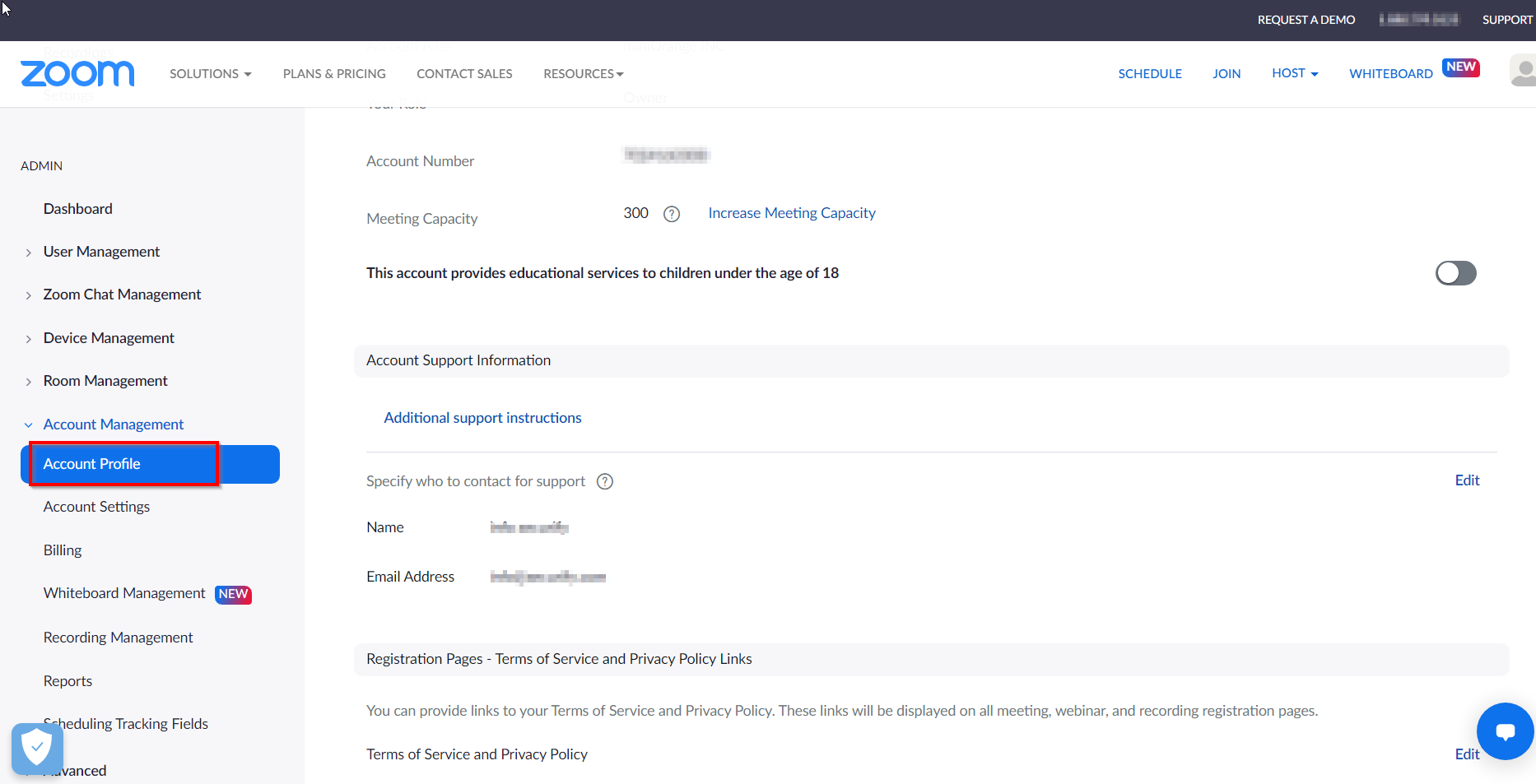
- In Associated Domains section, you need to verify at least one domain which is used to create the email account with same domain name.
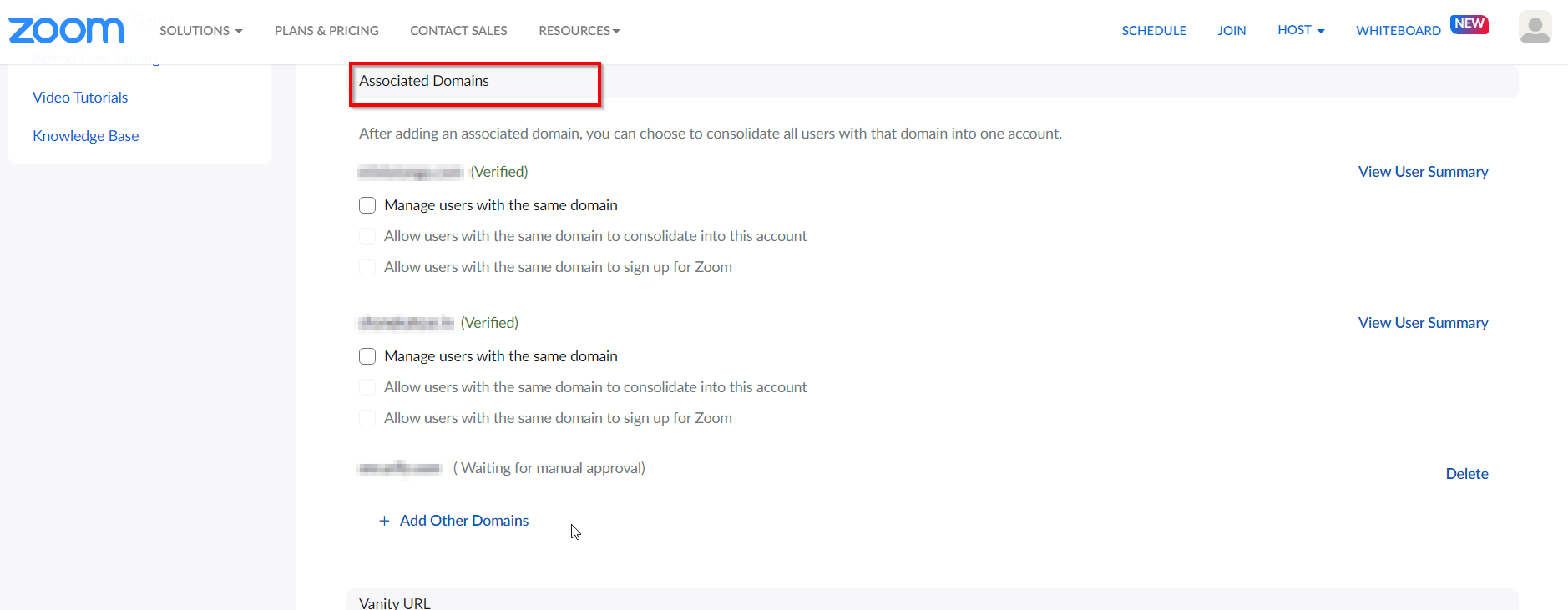
Follow the step-by-step guide given below to setup Zoom SCIM Provisioning
1. Configure Provisioning in Zoom
- Sign in to Zoom App Marketplace.
- Search for miniOrange.

- Click on Add button.
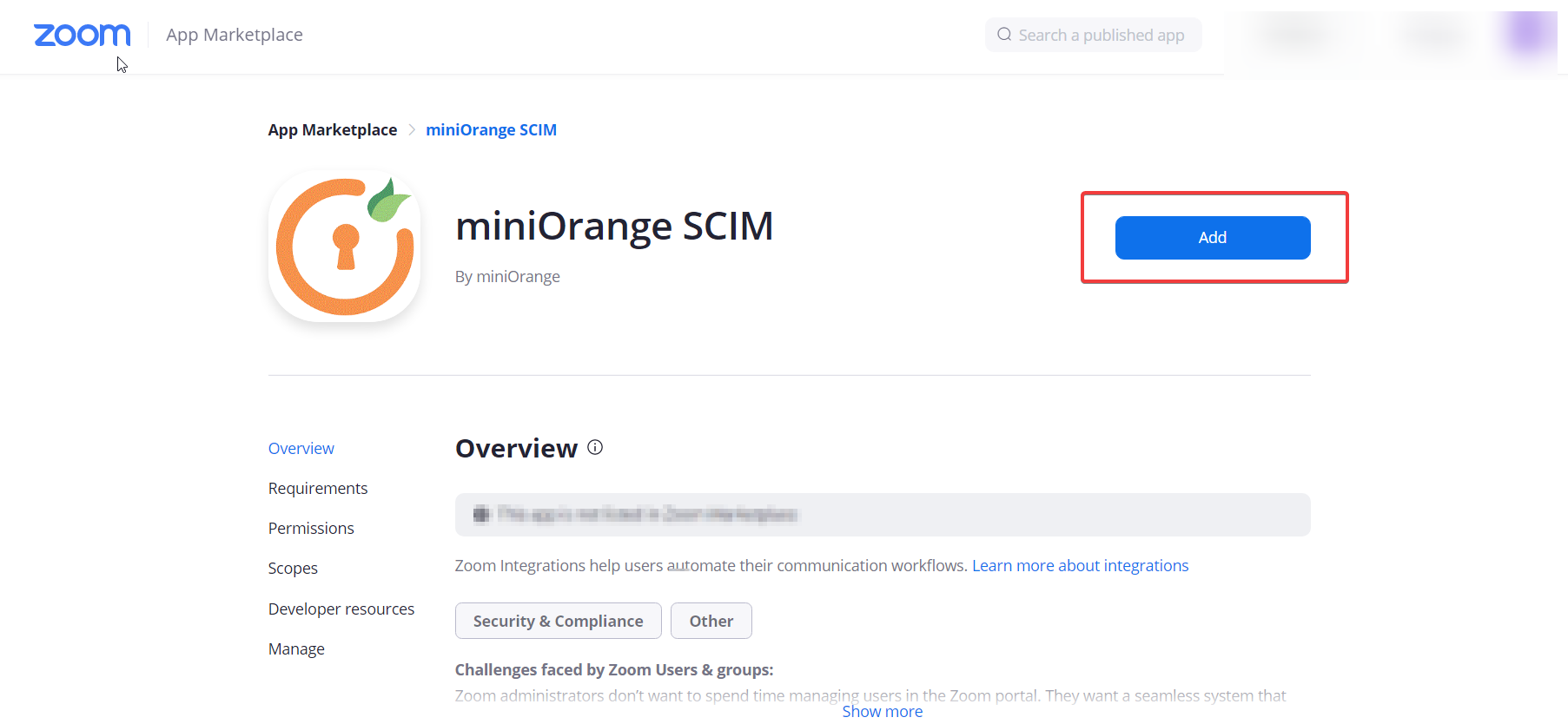
- To grant permission to the app, click on Allow button.
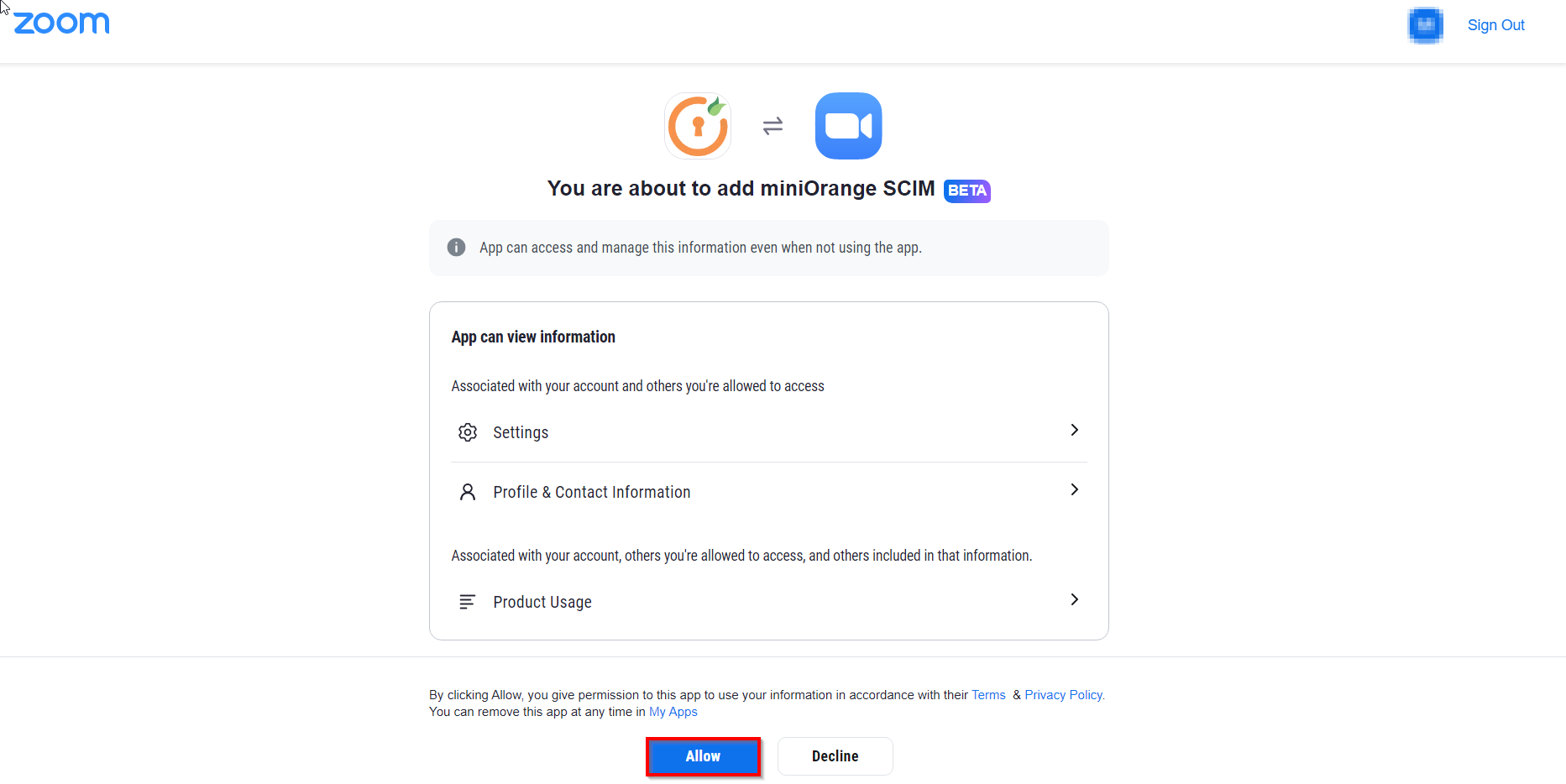
- Now copy and save the Zoom Base URL and Access token. These values will be used while configuring Provisioning app in miniOrange dashboard.
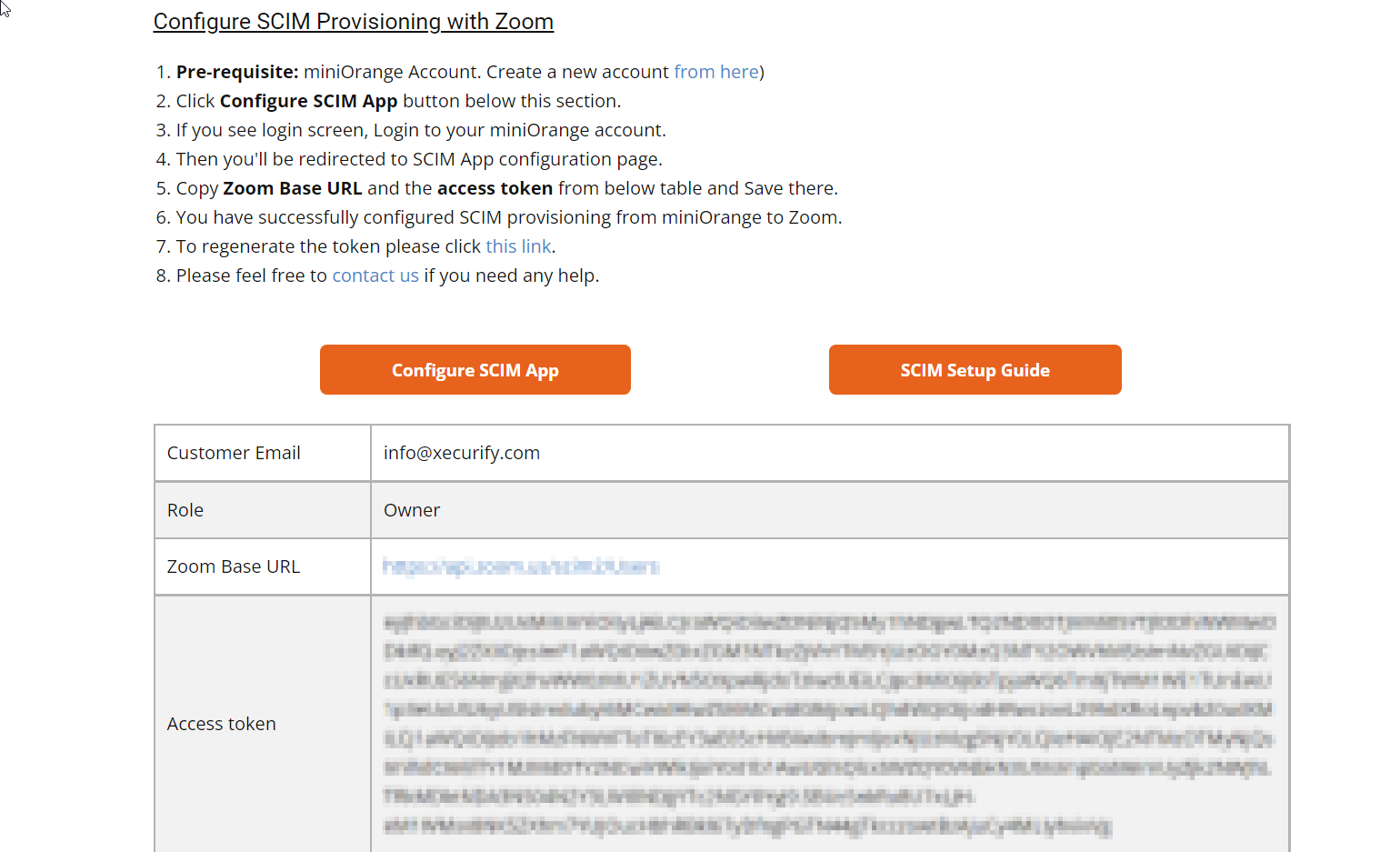
2. Configure SCIM for Zoom in miniOrange
- If you are using any external IDP and just want to enable provisioning through us:
- Go to Apps >> Provisioning >> Create a SCIM 2.0 App for Zoom.

- Now, enter the Zoom Base URL and Access token in SCIM Base URL and Bearer token fields respectively from miniOrange SCIM app page.

3. Add Attribute Mapping
- Add the following attributes:
| Target Attributes |
miniOrange Attribute |
|
| userName |
DEFAULT USER PROFILE ATTRIBUTE |
Username |
| active |
DEFAULT USER PROFILE ATTRIBUTE |
Active |
| name.givenName |
DEFAULT USER PROFILE ATTRIBUTE |
First Name |
| name.familyName |
DEFAULT USER PROFILE ATTRIBUTE |
Last Name |
| emails[type eq "work"] |
DEFAULT USER PROFILE ATTRIBUTE |
E-Mail Address |
| urn:ietf:params:scim:schemas:extension:enterprise:2.0:User:organization |
CUSTOM USER PROFILE ATTRIBUTE |
Custom Attribute 1 |
- In Enable Provisioning Features, you can enable any feature below.

- Click on Save button.
4. Create Group
- Go to Groups > Create Group. Enter the Group Name and click on Create Group button and the group will be created.
5. Add Policy
- In the Policies section, navigate to Add Policy tab.
- In Select Application section, select the application you have created in step2.
- In Configure Settings section, select the group you have created in step4 and enter the policy name with the required login method.
- Click on Save button.
6. Add Users
- Go to Users > Add User.
- Enter the Users Details but the users will be added only if they are assigned to any group. Follow the next step to assign the users to the group.
7. Assign Users
- Go to Groups.
- Assign the users to the Group you have created in step4 and users will be added automatically.
View Provisioning Reports
How to access Provisioning Reports?
- Navigate to the Reports in the left-hand navigation pane and select Provisioning Report.
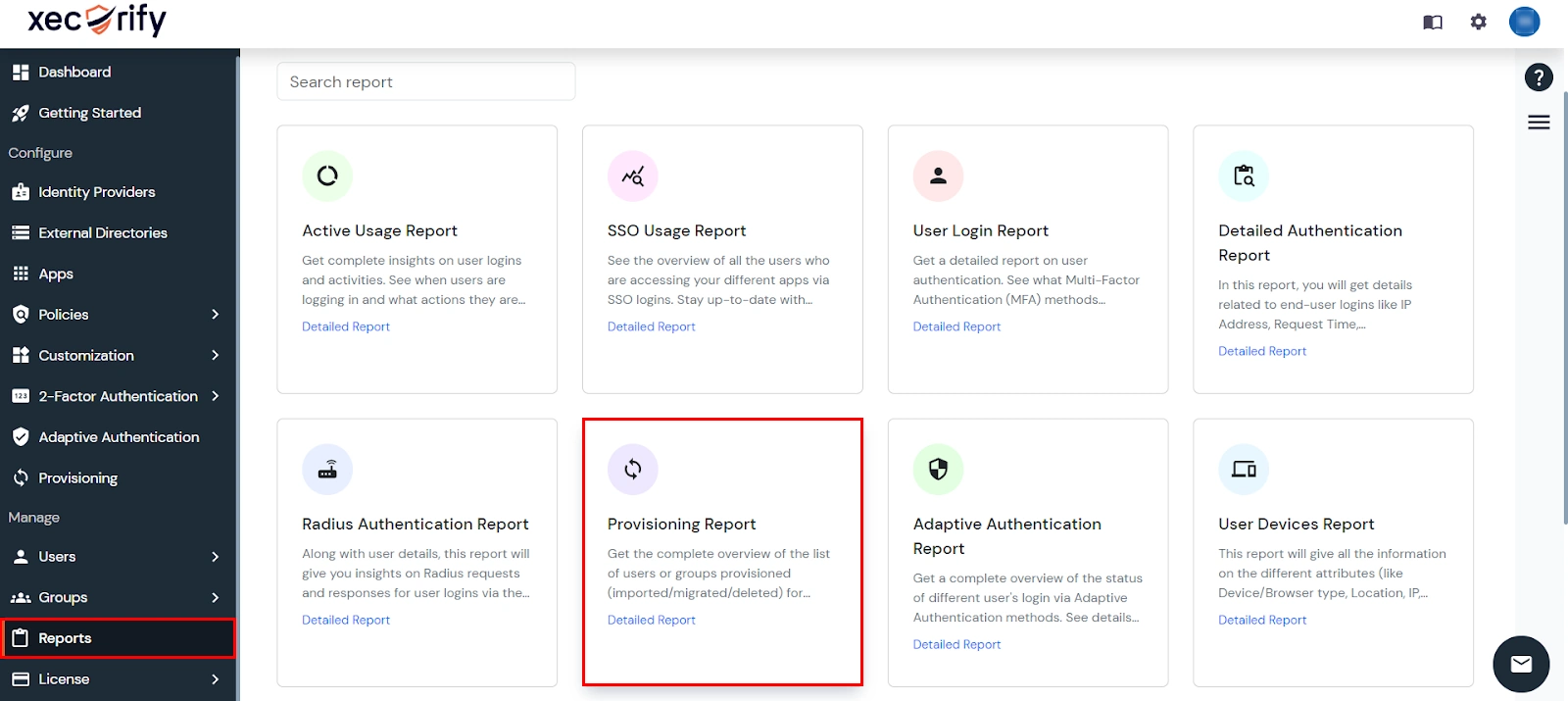
- Filter the reports by specifying Enduser Identifier and Application Name criteria. Additionally, choose the desired timespan for the reports. Once done, click on the Search.
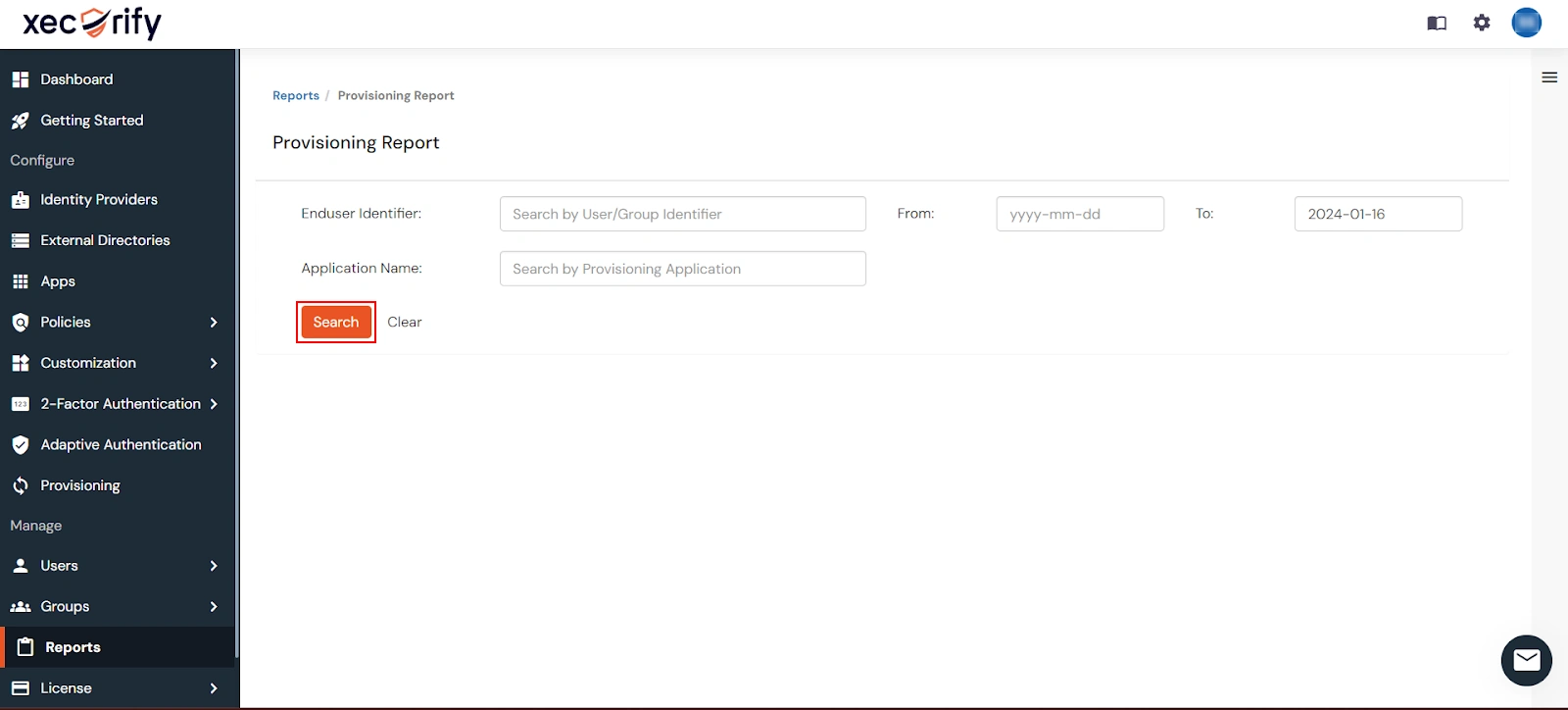
- Alternatively, you can directly click on Search to retrieve all provisioning reports based on time without applying any specific filters.
External References
